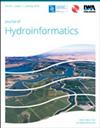Modeling ion constituents in the Sacramento-San Joaquin Delta using multiple machine learning approaches
IF 2.2
3区 工程技术
Q3 COMPUTER SCIENCE, INTERDISCIPLINARY APPLICATIONS
引用次数: 0
Abstract
Abstract Salinity is of paramount importance in shaping water quality, ecosystem health, and the capacity to sustain diverse human and environmental demands in estuarine environments. Electrical conductivity (EC) is commonly utilized as an indirect measure of salinity, serving as a proxy for estimating other ion constituents within the Delta. This study investigates and contrasts four machine learning (ML) models for approximating ion constituent concentrations based on EC measurements, emphasizing the enhancement of conversion for constituents exhibiting pronounced non-linear relationships with EC. Among the four models, the artificial neural network (ANN) model outshines the others in predicting ion constituents from EC, especially for those displaying strong non-linear relationships with EC. All four ML models surpass traditional parametric regression equations in terms of accuracy in estimating ion concentrations. The K-fold cross-validation method is utilized to evaluate the reliability of the ANN model, ensuring a comprehensive appraisal of its performance. Furthermore, an interactive web-browser-based dashboard is developed, catering to users with or without programming expertise, enabling ion level simulation within the Delta. By furnishing more precise ion constituent estimations, this research enriches the understanding of salinity's effects on water quality in the Delta and fosters well-informed water management decisions.使用多种机器学习方法对萨克拉门托-圣华金三角洲的离子成分进行建模
盐度在塑造水质、生态系统健康以及维持河口环境中各种人类和环境需求的能力方面具有至关重要的作用。电导率(EC)通常被用作盐度的间接测量,作为估计三角洲内其他离子成分的代理。本研究调查并对比了四种机器学习(ML)模型,用于基于EC测量近似离子成分浓度,强调了与EC表现出明显非线性关系的成分的转换增强。在四种模型中,人工神经网络(ANN)模型在预测电导率离子成分方面表现突出,特别是对那些与电导率表现出强烈非线性关系的模型。在估计离子浓度的准确性方面,所有四种ML模型都超过了传统的参数回归方程。采用K-fold交叉验证方法评估人工神经网络模型的可靠性,确保对其性能进行全面评价。此外,还开发了一个交互式的基于web浏览器的仪表板,以满足具有或不具有编程专业知识的用户的需求,从而在Delta中实现离子水平模拟。通过提供更精确的离子成分估计,本研究丰富了对盐度对三角洲水质影响的理解,并促进了明智的水管理决策。
本文章由计算机程序翻译,如有差异,请以英文原文为准。
求助全文
约1分钟内获得全文
求助全文
来源期刊

Journal of Hydroinformatics
工程技术-工程:土木
CiteScore
4.80
自引率
3.70%
发文量
59
审稿时长
3 months
期刊介绍:
Journal of Hydroinformatics is a peer-reviewed journal devoted to the application of information technology in the widest sense to problems of the aquatic environment. It promotes Hydroinformatics as a cross-disciplinary field of study, combining technological, human-sociological and more general environmental interests, including an ethical perspective.
 求助内容:
求助内容: 应助结果提醒方式:
应助结果提醒方式:


